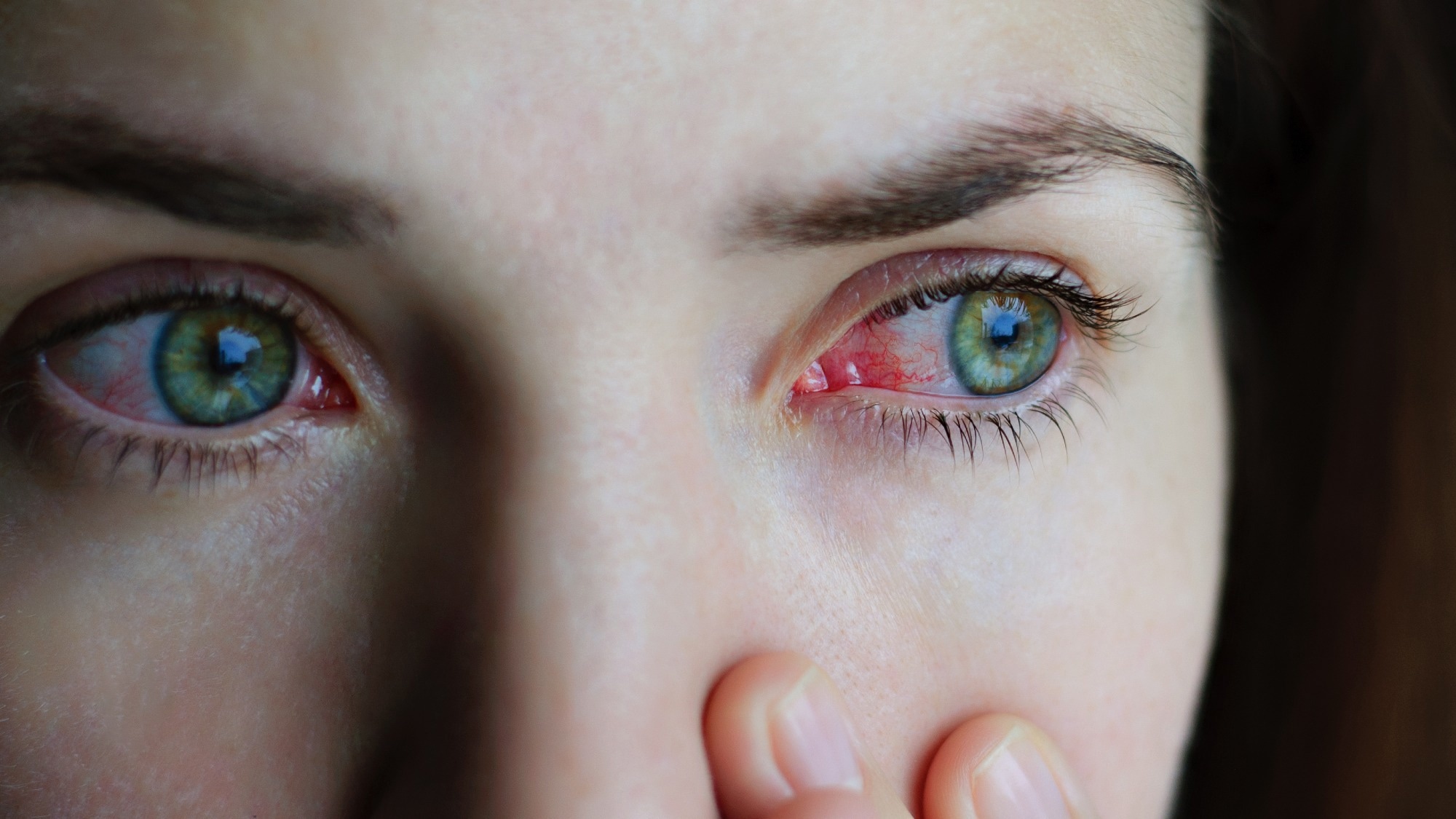A study published in The Ocular Surface describes the association between monkeypox infection and eye complications in humans.

Background
Monkeypox is a DNA virus belonging to the same orthopox genus as the smallpox virus variola. It is a zoonotic virus that jumps from animals to humans to transmit infection. The virus was initially endemic to Central and West Africa, and the first human monkeypox infection was detected in 1970 in the Democratic Republic of the Congo.
In 2022, new outbreaks of monkeypox infection have been documented in many non-endemic countries across the globe. This sudden rise in cases might be due to the loss of population-level cross-protection provided by smallpox vaccines against the monkeypox virus. The world health organization (WHO) declared monkeypox outbreaks a global public health emergency on July 23, 2022.
Monkeypox virus has two distinct genetic variants: clade 1 (Central African origin) and clade 2 (West African origin). The causative virus of recent outbreaks belongs to clade 2. Regarding the mode of transmission, the monkeypox virus can undergo animal-to-human and human-to-human transmission. Although not enough evidence is available regarding virus-harboring animal species, it is generally believed that rodents might serve as a potential reservoir for the virus.
Clinical manifestations of monkeypox infection
In most cases, monkeypox infection is self-limiting and resolves within 2-4 weeks. Fever, chills, and myalgia are the most common symptoms lasting up to 5 days post-infection onset. The initial symptoms might also include severe headaches, lymphadenopathy, and fatigue.
The major hallmark of monkeypox infection is severe skin rashes or lesions lasting up to 2-3 weeks. In severe cases, the virus might cause secondary skin infection, bronchopneumonia, gastroenteritis, sepsis, and encephalitis. A growing pool of evidence has also highlighted that the virus might cause eye complications.
Monkeypox infection and eye-related complications
Studies investigating clinical manifestations of monkeypox infection indicate that conjunctivitis and eyelid edema are common eye complications observed in infected people. Some patients develop focal lesions on the conjunctiva and across the eyelid margin. Eyelid inflammation has also been identified as a potential complication.
Genetics & Genomics eBook

Regarding sources of eye infection, studies have documented that conjunctivitis is more common in monkeypox infections originating from animal sources. Infected patients with conjunctivitis experience a higher frequency of other symptoms, including nausea, chills, oral ulcers, sore throat, malaise, lymphadenopathy, and photophobia. They may also experience frontal headaches involving the orbital region.
In extreme cases, monkeypox infection can lead to cornea inflammation (keratitis), corneal scarring, and even vision loss.
Preventive measures against eye complications
Certain preventive measures can be implemented to avoid severe eye complications in at-risk patients with monkeypox infection. Topical lubricants can be applied to prevent superficial injuries at the eye surface. Vitamin supplementation could also be useful in boosting overall immunity.
Trifluridine and vidarabine eye drops are known to provide protection against orthopox virus-related corneal lesions. Off-level use of these eye drops every 4 hours for 7-10 days can be effective against monkeypox-related eye complications.
The most vital preventive measure would be large-scale global vaccination against the smallpox virus. It has been highlighted by many studies that people without smallpox vaccination are at significantly higher risk of developing eye complications.
Treatment for monkeypox infection
No clinically-approved treatment is currently available for human monkeypox infection. The US Food and Drug Administration (FDA) has previously approved two oral drugs, brincidofovir and tecovirimat, for treating human smallpox infections. These drugs have shown therapeutic efficacy against monkeypox infection in animals. However, no human clinical trials have been conducted so far to study these drugs.
Conclusion
A considerable association between monkeypox infection and eye complications has made it necessary to increase the surveillance and detection of monkeypox infections with eye manifestations. While treating patients with eye symptoms, ophthalmologists should consider monkeypox infection as a part of their differential diagnosis.
More studies are needed to identify the causal link between infection and eye complications. This would help develop potential therapeutic interventions. A multidisciplinary team should be formed with veterinarians, physicians, virologists, and public health experts to better manage the ongoing monkeypox outbreaks.
- Faye YuCi Ng. (2022). Monkeypox and ocular implications in humans. The Ocular Surface. doi: https://doi.org/10.1016/j.jtos.2022.10.005 https://www.sciencedirect.com/science/article/pii/S154201242200091X
Posted in: Medical Science News | Medical Research News | Disease/Infection News
Tags: Conjunctivitis, Cornea, DNA, Drugs, Edema, Efficacy, Encephalitis, Eye, Fatigue, Fever, Food, Frequency, Gastroenteritis, Genetic, Headache, immunity, Inflammation, Keratitis, Lymphadenopathy, Monkeypox, Nausea, Photophobia, Public Health, Sepsis, Skin, Skin Infection, Smallpox, Sore Throat, Throat, Virus

Written by
Dr. Sanchari Sinha Dutta
Dr. Sanchari Sinha Dutta is a science communicator who believes in spreading the power of science in every corner of the world. She has a Bachelor of Science (B.Sc.) degree and a Master's of Science (M.Sc.) in biology and human physiology. Following her Master's degree, Sanchari went on to study a Ph.D. in human physiology. She has authored more than 10 original research articles, all of which have been published in world renowned international journals.
Source: Read Full Article



